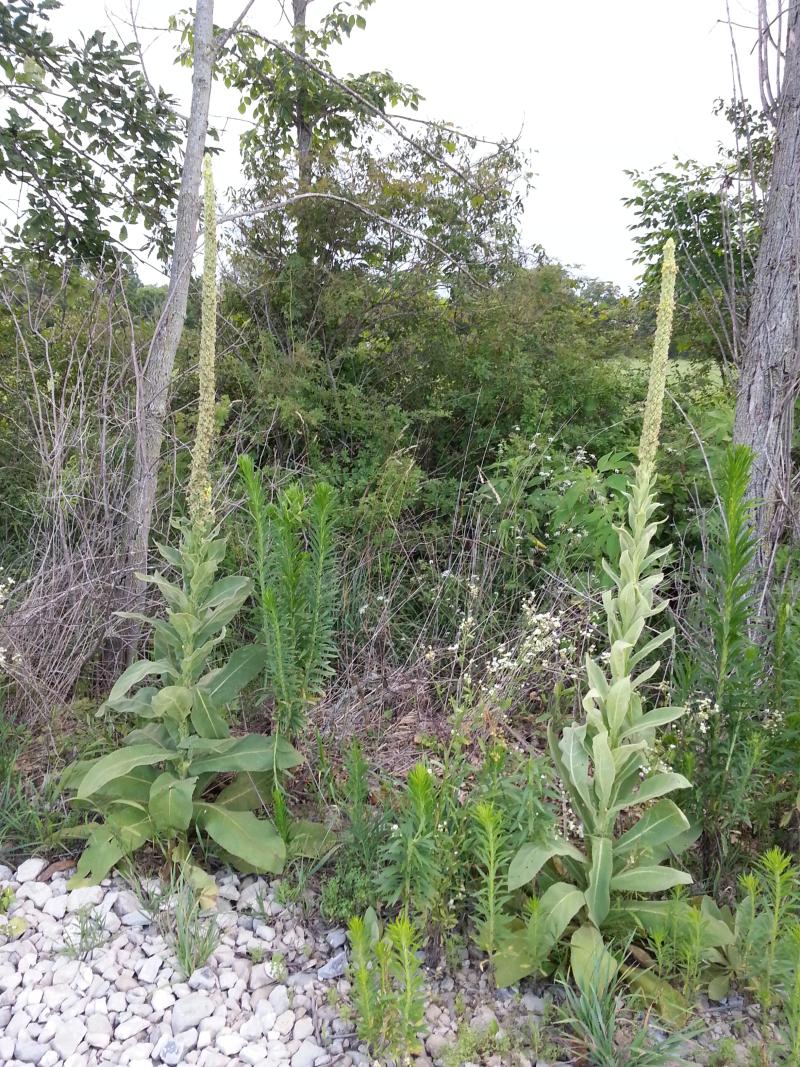What's furry all over, poisons fish, and acts as an "admirable" bactericide and treatment for bronchitis?

I came across a set of somewhat bizarre-looking weeds growing in a fence row this past weekend. Although not particularly aesthetic like some other flowering weeds, they caught my eye because of their extraordinary size. Standing about 4-5 feet tall, the conspicuous behemoths towered over the surrounding vegetation. Upon closer examination, I found that the leaves were quite furry with trichomes, and small yellow flowers were sporadically opening near the top of the plant on a slender inflorescence stem. Since my weed identification skills are pretty much limited to dandelions and thistle, I had to rely on a handy pictorial guide published by none other than The Ohio State University (1). The weeds in question turned out to be common mullein (Verbascum thapsus), an introduced biennial plant originally from Eurasia. As the name would suggest, what I thought might be a rare plant is actually quite common across the entire United States, reaching even Hawaii and Alaska (2). That's quite a range in climates!

Does anyone study common mullein, and are the plants actually good for anything? The answers are yes, and yes! A review paper (3) discusses the wide variety of medicinal uses of Verbascum thapsus by people all over the world, including the American Indians. It appears the main reason this plant was introduced to the US (circa the 1700s) was to poison fish for easier catching, as fish fed on the toxic seeds would suffer effects on their nervous- and respiratory systems. Historically, the plant was used to treat anything from bronchitis, migraines, warts, earaches, and, as quaintly stated in (3), is an "admirable bactericide." In modern times, common mullein is not heavily studied, but has had some recent interest regarding seed oil content (4) and potentially useful metabolites in plant extracts (5).
Written by TPS Fellow, Irene Gentzel
References
(1) http://www.oardc.ohio-state.edu/weedguide/single_weed.php?id=78
(2) https://plants.usda.gov/core/profile?symbol=VETH
(3)https://www.researchgate.net/publication/7542947_Common_mullein_Verbascum_thapsus_L_recent_advances_in_research
(4) https://link.springer.com/article/10.1007/s11746-006-5036-8
(5) https://link.springer.com/article/10.1007%2Fs12272-011-0501-9
